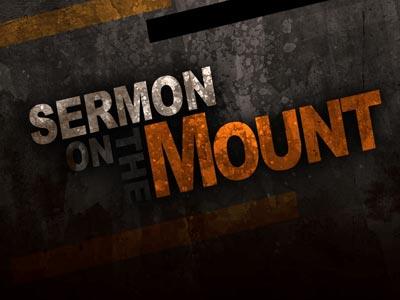-
Do No Harm (Be Better Than That)
Contributed by Monty Newton on Nov 28, 2017 (message contributor)
Summary: To do no harm is to emulate the teaching of Jesus. Sometimes not making things worse is the Christ-like thing to do.
Title: Do No Harm (Be Better Than That!)
Text: Matthew 5:38-48
Thesis: To do no harm is to emulate the teaching of Jesus. Sometimes not making things worse is the Christian thing to do… and makes things better.
Introduction
The ethical mandate to do no harm probably originated in the practice of medicine. The idea being, a physician would be guided by the over-riding principle that above all else, in their attempt to treat a patient, they would do nothing that would make matters worse and even potentially kill the patient.
Today the ethic, do no harm is widely applied in health and spiritual care, humanitarian aid, scientific research, business and industry, education and so on and on and on.
The ethic do no harm may be applied in any situation. Will what I am about to say or do result in exacerbating an already bad situation or will it be helpful? Whatever we do, we do not want to do more harm by making matters worse. If your house is on fire the last thing you want to do is throw gas on the fire.
I hate it when someone honks their horn at me. Some years ago I was attempting to park in a crowded parking lot at a restaurant in Chicago. Have you ever noticed how businesses try to optimize their parking by creating tiny little spaces? I was in the spot but at a really bad angle that left no room to open my door, so I was attempting to square the car up so it was evenly spaced between the lines. That’s when some guy laid on his horn to encourage me to get out of his way.
Interestingly, inside I found myself standing next to the guy while waiting for a table. He was obviously in a hurry and I was still simmering over being honked at. My caution light was way past being helpful. My red light was flashing “Stop” but I would have none of it. I was going to run the light. So I confronted him and said, “Oh, you’re the honker! Since you’re in such a big hurry, why don’t you just go ahead of me?” Fortunately, he declined.
If I had been operating under the ethic, “do no harm,” I would have let the issue die out there in the parking lot or at least apologized to him for getting in his way with my sloppy attempt at parking. Doing no harm means we do not add fuel to the fire and make things worse. I think Jesus’ teaching in our text today is really about doing no harm. Do no harm. Do not add fuel to the fire.
In this teaching Jesus created an umbrella idea regarding how we may react in situations that we could easily make worse. Jesus says that in those situations the Christians is to “do no harm.”
I. Jesus’ teaching on revenge, Matthew 5:38-42 (Resentment)
“You have heard the law that says the punishment must match the injury: ‘An eye for an eye and a tooth for a tooth.’ But I say, do not resist an evil person!”
I remember the story of the mother who heard her 7-year-old son making a very unhappy sound… she found his 2-year-old sister pulling his hair. She released the little girl’s grip on his hair and said, “There, there. She didn’t mean it. She doesn’t know that hurts.” As started down the hall she heard her little girl scream… rushing back into the room she asked, “What happened?” The little boy replied, “She does now.” He was a firm believer in a hair-pulling for a hair-pulling.
We began last week by referring to Jesus’ teaching about what life is like in the Kingdom of God. “But I warn you – unless your righteousness is better than the righteousness of the teachers of religious law and the Pharisees, you will never enter the Kingdom of Heaven.” (Matthew 5:20) In other words Christians live in such a way as to not only keep the letter of the law but also the spirit of the law. Jesus wants us to be better than just letter of the law keepers. Jesus wants us to not respond to hair pulling with hair pulling.
Jesus set up his teaching as an antithesis. An antithesis is a rhetorical contrast of ideas using a parallel arrangement or pattern of words. There is always a tension in an antithesis.
The pattern in our text is a series of antithetical statements:
• “You have heard…”
• “But I say…”
Jesus said, “You have heard the law that says the punishment must match the injury: ‘An eye for an eye and a tooth for a tooth.’ But I say, do not resist an evil person!”
The “eye for an eye, and tooth for a tooth” law is purportedly the oldest law in the world. It is known as the Lex Talionis or the Law of Retaliation… it is described as the law of tit for tat. We find this tit for tat law in our text today, which is based on Exodus 21:23-25. (Verses 23-25 are lifted from a larger section of Scripture that deals with fair treatment in cases of personal injury and liability.)

 Sermon Central
Sermon Central



